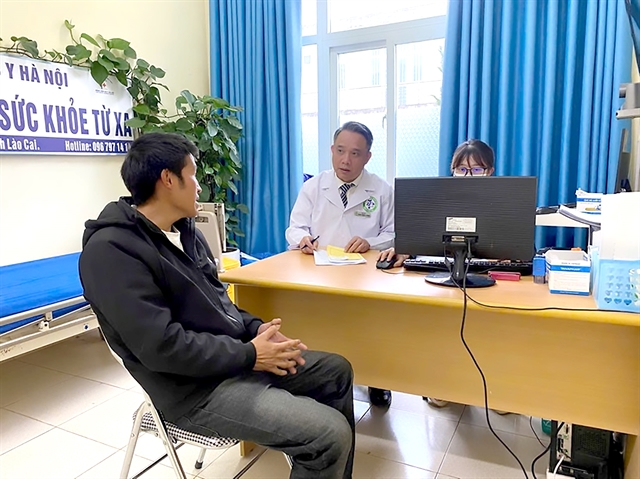 Society
Society

 |
| Dr. Phạm Lê Trung, director of Sa Pa Hospital, Lào Cai Province, provides health consultation to a local patient. Photo nhandan.com.vn |
HÀ NỘI Grassroots-level healthcare systems are facing the new challenges of operation under the two-tier government model to ensure the quality of medical examinations and treatment as well as preventing overloading at higher-level hospitals.
Việt Nam’s grassroots healthcare system currently includes medical services at village, commune, ward and township levels.
Despite its key role in the national healthcare system, grassroots healthcare remains insufficiently attractive to the public.
During a visit to the National Lung Hospital in late June, many patients from distant provinces were observed bypassing local facilities to seek treatment, Nhân Dân (The People) newspaper reported.
Nguyễn Văn Hưng, 70, from Quản Bạ Commune in Tuyên Quang Province, has long suffered from chronic obstructive pulmonary disease (COPD).
Each visit requires his son to take a night bus, stop for rest in the old Hà Giang City and arrive in Hà Nội by the next morning.
Hưng said the medicine from local clinics was ineffective.
“Whenever I get sick, I go straight to the National Lung Hospital because I’m afraid of complications. Local clinics can’t handle them in time.”
Meanwhile, doctors emphasise that common conditions like hypertension, diabetes and COPD can be detected and managed at the community level.
However, people do not receive timely care at grassroots facilities so they are often transferred to higher-level hospitals once complications arise, leading to more costly and burdensome treatment.
During a recent health debate at the ninth session of the 15th National Assembly, Associate Professor Nguyễn Lân Hiếu, director of Hà Nội Medical University Hospital, said in reality, very few people go to grassroots clinics for primary health care or health consultations. One of the most obvious reasons is a lack of public trust in the quality of services at this level.
“To address this issue, we must strengthen the capacity of grassroots healthcare. Especially from July 1, when the two-tier local government model takes effect, the role of grassroots healthcare becomes even more crucial,” he said.
As administrative units are being streamlined into a two-tier model, many grassroots doctors say this is the right time to concentrate resources and reorganise the grassroots health system to make it closer and more accessible to the people.
Dr Dương Văn Quân, director of the Phong Thổ Medical Centre in Lai Châu Province, said under the new model, local health stations would be consolidated in line with local administrative changes. Three to four existing health stations might be merged into one central station located at the commune centre, the new local government headquarters, while the remaining stations would become satellite posts.
District-level health centres would be renamed medical centres and serve as the core unit for the entire grassroots system, he said.
These medical centres would function as the main general healthcare provider at the grassroots level. They would be equipped with standard technical capacity and responsible for handling more complex cases than commune-level clinics, including diagnostic tests and minor surgeries. They would also serve as the first referral point from commune health stations,
He said the new commune-level health stations would serve as the “main ports” of the grassroots system, concentrating significant resources and offering basic medical services.
Dr Phạm Lê Trung, director of Sa Pa Hospital, Lào Cai Province, said grassroots healthcare facilities needed further investment in personnel, infrastructure and medical equipment. More training and rotation of doctors from upper levels to local facilities should be implemented based on the needs of each locality.
He proposed establishing remote diagnosis and treatment support centres to connect with grassroots clinics. VNS




